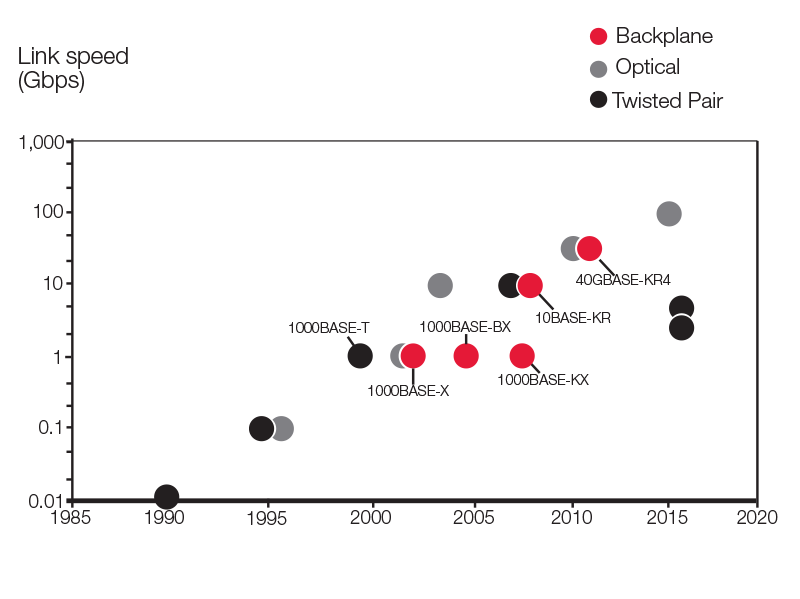
Ethernet has grown to become a universal networking technology, evolving to provide ever-faster links over a wide range of media. To meet the need for higher performance, many embedded systems now use “backplane Ethernet” to communicate between cards in modular systems. This paper provides an overview of the benefits of backplane Ethernet and highlights the key concerns for VPX system designers.

Figure 1: Selected Ethernet standards
Ethernet has long been used to provide connectivity within embedded systems. In many cases the Ethernet interface on embedded products is based on the same standard commonly deployed on personal computers and other commercial devices: 1000BASE-T “Gigabit Ethernet”. However a variety of other Ethernet standards provide numerous alternatives suitable for different applications. These other standards vary in performance (with speeds ranging from 10 Mbps to 100 Gbps), and the media they use (such as twisted pair cabling, or fiber optics). Relatively new “backplane” Ethernet standards enable high-speed links over PCBs, through connectors and backplanes. These link standards provide a number of advantages for modular embedded systems that connect together multiple processor cards, in particular modern high-performance embedded computing (HPEC) systems based on the VPX standard.
Log in and download the white paper to learn more about:
- Before Backplane Ethernet
- Backplane Ethernet standards
- Ethernet and OpenVPX